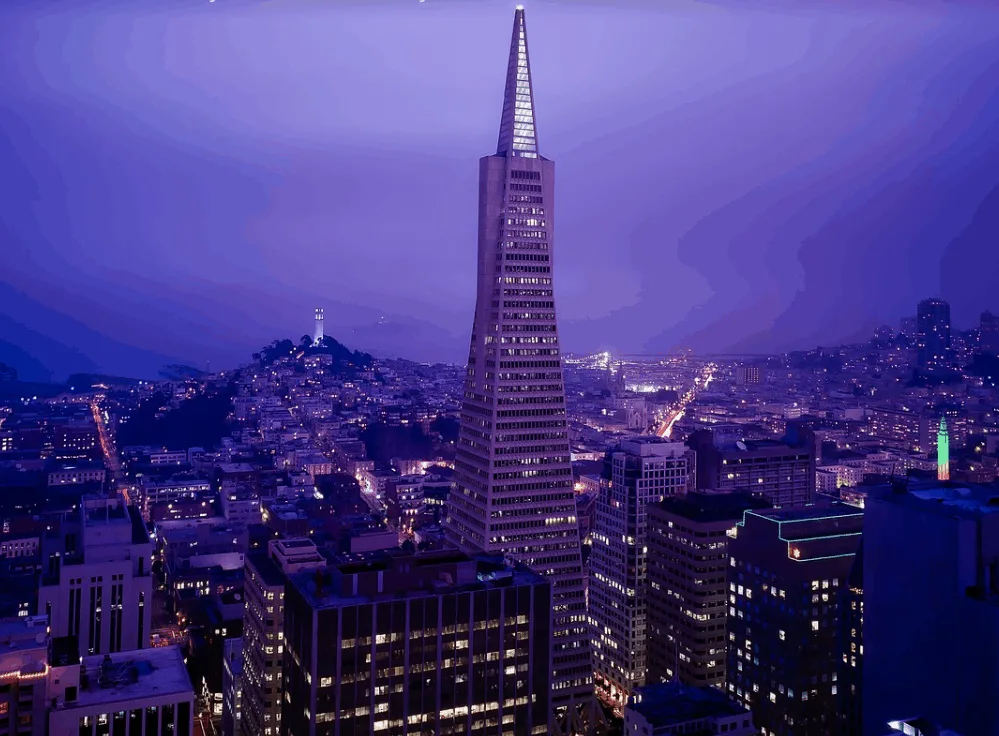Did you know that one of the most fascinating skyscrapers in the world is located in San Francisco?
In this post, you’ll discover the ultimate list of Transamerica Pyramid facts, a San Francisco skyscraper that has dominated the city’s skyline for decades!
1. It was commissioned by the CEO of an insurance company
The Transamerica Pyramid was commissioned by the CEO of the Transamerica Corporation, a holding company for various life insurance companies and investment firms.
When John R. Beckett became CEO of the Transamerica Corporation in 1960, he transformed it from an obscure holding company to one of the most successful financial companies in American history and more importantly, a household name as well.
One of his major achievements was to commission the construction of new headquarters for the company, something he managed to achieve less than 10 years after he took over as construction of the skyscraper started in 1969.

2. The company only has one more tie to the building
Even though the company moved into the new building in the year 1972, it doesn’t have its headquarters in the building anymore. In 1999, it became a subsidiary of Aegon, a European financial company located in The Hague in The Netherlands.
Even though the company’s U.S. headquarters have been moved to Baltimore in Maryland, the company still uses the Transamerica Pyramid in its logo as it really defines the brand.
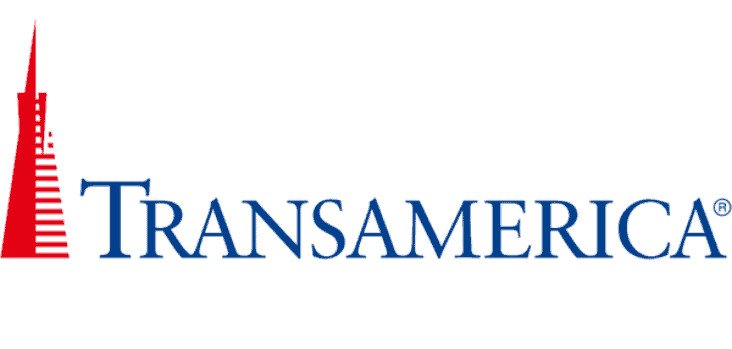
3. The company’s old headquarters are still being used
One of the most interesting facts about the Transamerica Pyramid is that the company didn’t have to move very far when the skyscraper was completed. They had their old headquarters right across the street in a flatiron-shaped building.
This building, which looks quite similar to the Flatiron Building in New York City, even though it’s on a much smaller scale, is now used by the Church of Scientology of San Francisco.

4. There was a famous building in its location

The Transamerica Pyramid is located on 600 Montgomery Street, between Clay and Washington Streets. This is on the location of the historic Montgomery Block in what is now the main financial center of the city.
This structure was built way back in 1853 and was the first fireproof and earthquake-resistant building in San Francisco!
It survived the major earthquake and fire in San Francisco in 1906 and was eventually demolished in the year 1959.
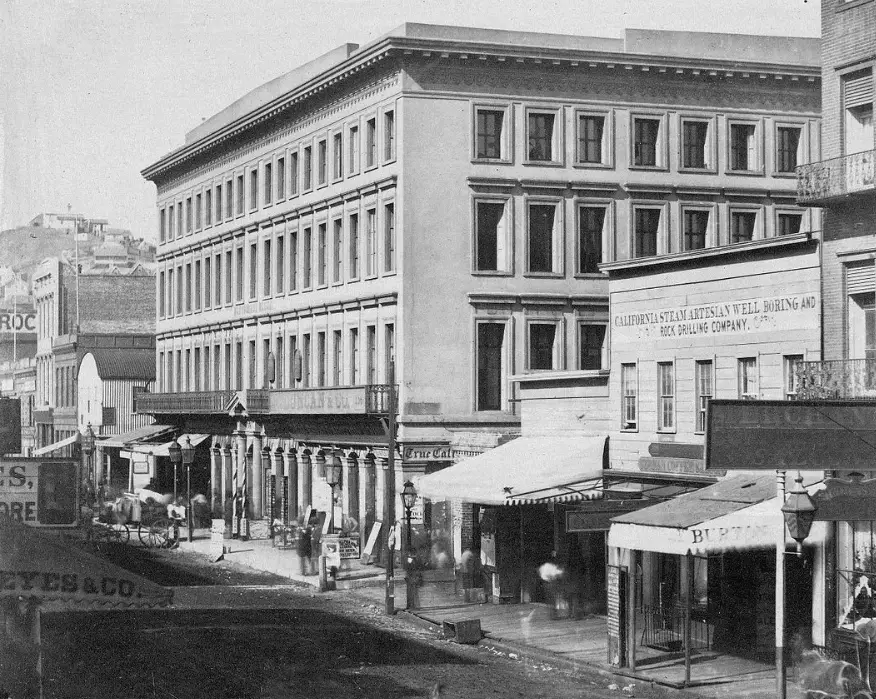
5. It’s the second-tallest skyscraper in the city
The Transamerica Pyramid stands 853 feet (260 meters) tall, which makes it the second-tallest skyscraper in the city.
It used to be the tallest skyscraper in San Francisco for numerous decades and it was only surpassed in 2017 when the Salesforce Tower was topped out at a height of 1,070 feet (326 meters).
It’s fair to say that it remains the most iconic skyscraper in the San Francisco skyline though!
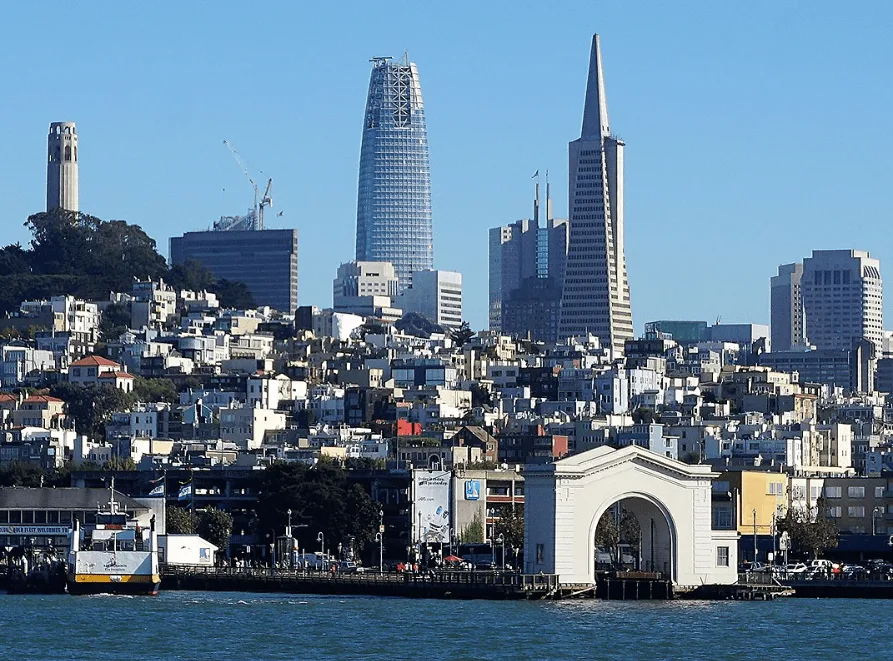
6. It briefly held a prestigious record upon completion
The tower was obviously the tallest skyscraper in San Francisco upon completion, but it also held another prestigious record. It also became the tallest building west of Chicago in 1972.
It didn’t hold this record long though because it was soon surpassed by the Aon Center in Los Angeles in 1974.
It also was the 8th tallest building in the world at that time in the early 1970s.
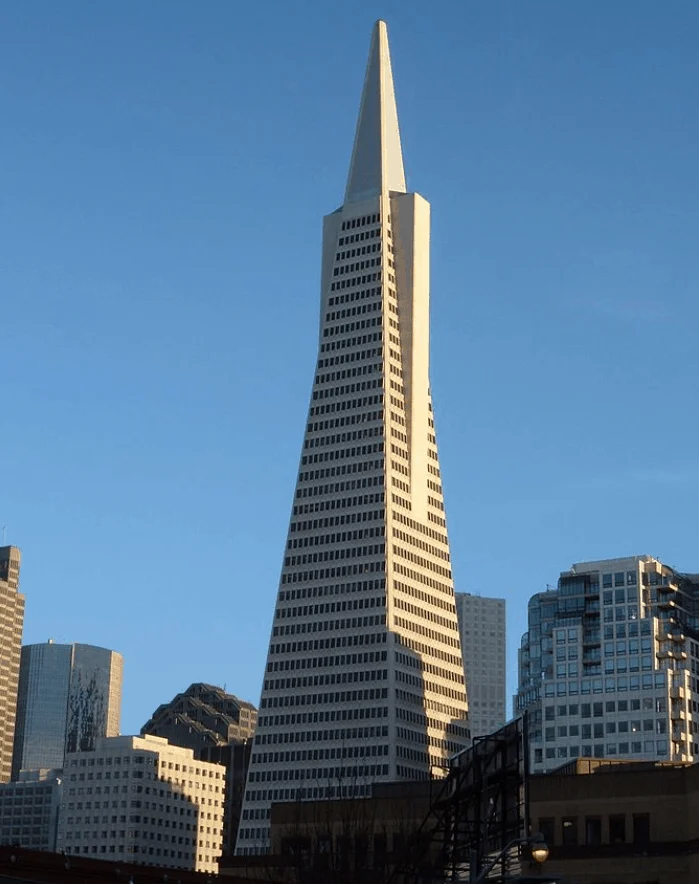
7. It was designed by an architect with a passion for science fiction
John R. Beckett, commonly referred to as Jack by his friends, engaged architect William Pereira, he only had one concrete demand and that was to ensure that the street below still had enough light. A noble demand which made it impossible to construct a standard rectangular skyscraper.
This must have been a dream come true for Pereira because he was a real science fiction fanatic who loved designing futuristic buildings. The result was a 48-story pyramid-shaped structure that basically defined his career and the San Francisco skyline.
Apart from designing numerous airports, skyscrapers, and various other buildings, one of his most intriguing designs was that of the Geisel Library in San Diego.
This building combines Futurism with Brutalist architecture, a combination that worked out remarkably well.
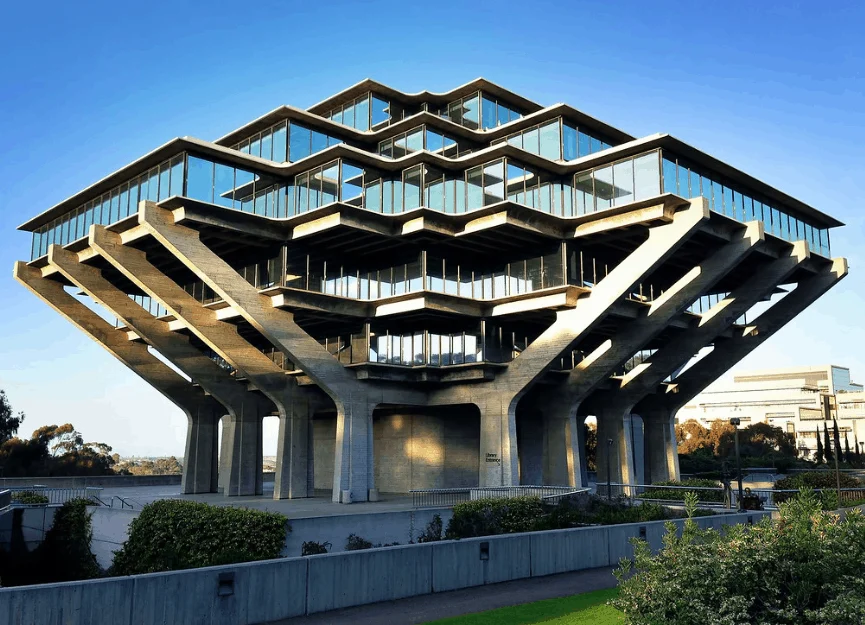
8. The initial opposition turned into praise for its design
As with most novel things, the Transamerica Pyramid wasn’t received positively initially. It was mockingly referred to as “Pereira’s Prick” during the planning and construction phase which makes it clear that the opposition didn’t know that this shape was used to avoid too much shade in the streets and park below.
Just as the Eiffel Tower was ridiculed in Paris, the critics of the Transamerica Pyramid changed their opinion when they realized that such a special building became a true symbol of the city.
In an opinion piece in the San Francisco Chronicle called “The Pyramid’s steep path from civic eyesore to an icon,” it was described by John King as:
An architectural icon of the best sort, one that fits its location and gets better with age.
John King from the SF Chronicle about the Transamerica Pyramid.
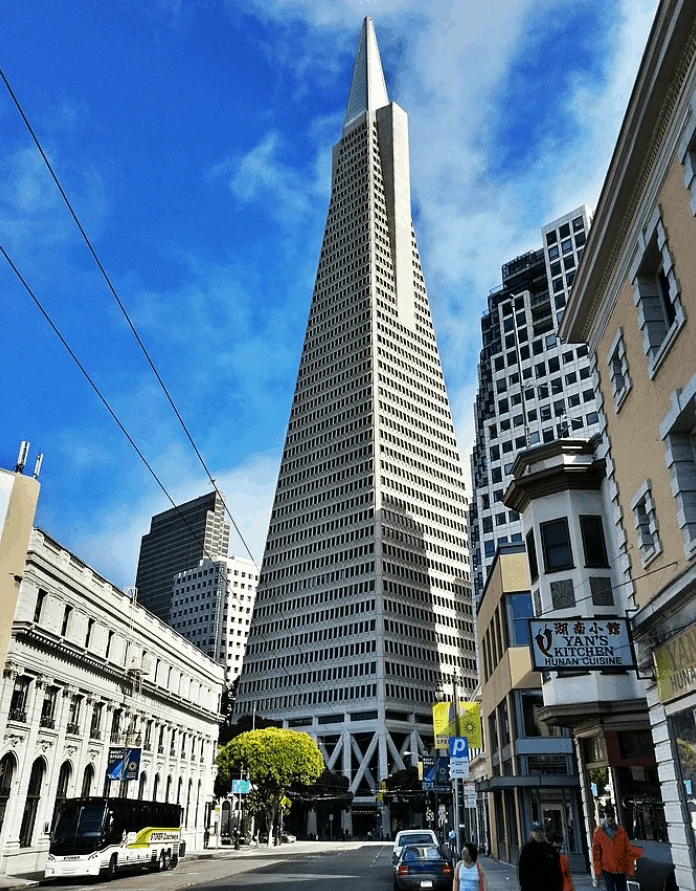
9. The pyramid-shaped building has two “wings” near the top
One of the most fascinating Transamerica Pyramid facts is that even though the building starts as a four-sided pyramid at the base, it has two design features that appear to be wings near the top.
The reason these were integrated was to accommodate an elevator shaft on the east side and a stairwell and a smoke tower on the west.

10. There’s a “Crown Jewel” at the top of the building
If you look closely you can see that the top of the building is covered with aluminum panels. Below these panels, there is a lighting system integrated that lights up during special days of the year, such as the Christmas holiday season, Independence Day, and during the anniversary of 9/11.
because of the special effect this creates, the media has dubbed the top of the Transamerica Pyramid as the “Crown Jewels.”
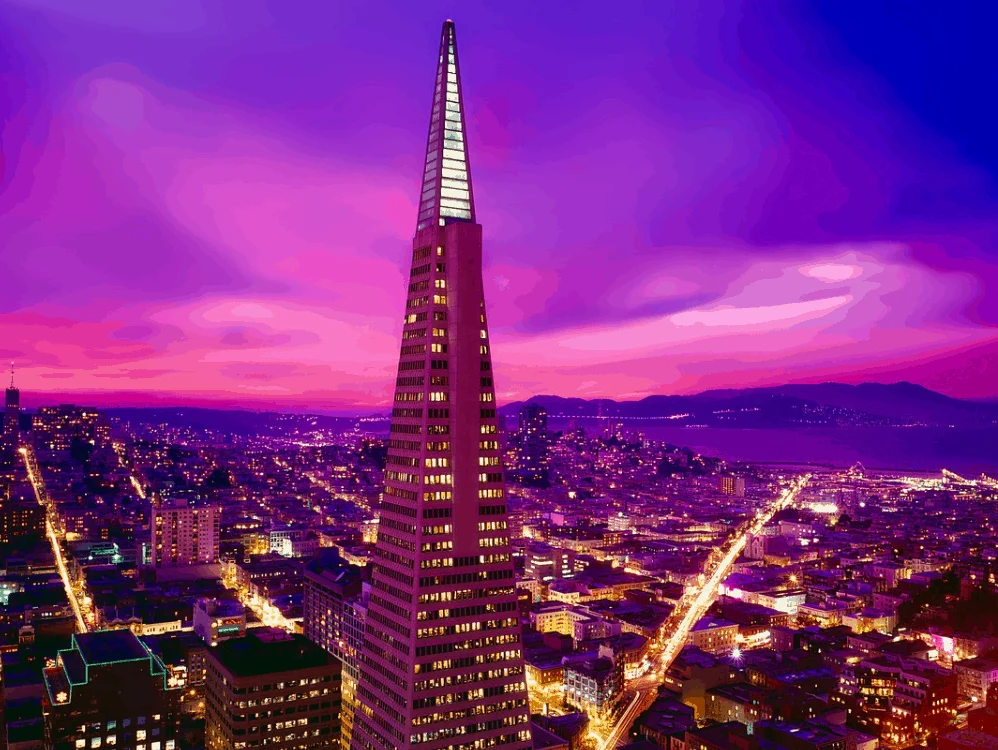
11. A park at the base of the tower features trees from the Santa Cruz Mountains
Keeping the sunlight in the streets wasn’t the only reason the skyscraper was built with a pyramid-shaped design. There’s a very nice park located at the base of the tower as well.
One of the most remarkable Transamerica Pyramid facts is that this park was decorated in the early 1970s with redwood trees that were transplanted from the Santa Cruz Mountains.
Apart from the trees, the park also has a fountain and several statues and sculptures. It is usually open during the daytime for the general public to enjoy as well!
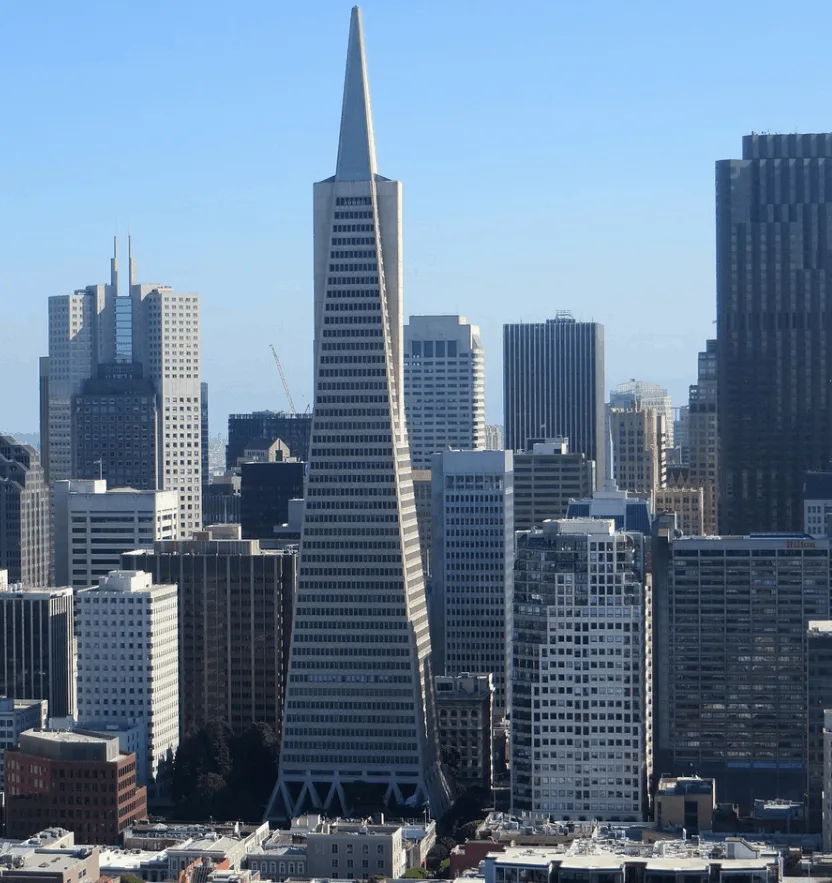
Quick Transamerica Pyramid facts
12. The Transamerica Pyramid stands 853 feet (260 meters), consists of 48 floors and the top floor is located at a height of 695 feet (212 meters).
13. The total floor area of the building was restricted and only consists of 702,000 square feet (65,200 square meters). That’s only 1/4 of the Empire State Building in New York.
14. The total construction cost at the time was USD 32 million. When calculating with inflation this is over USD 197 million today!
15. The reason that the concrete Transamerica Pyramid has a light shade of color is that its façade is covered in crushed quartz, a hard mineral consisting of silicon and oxygen atoms.
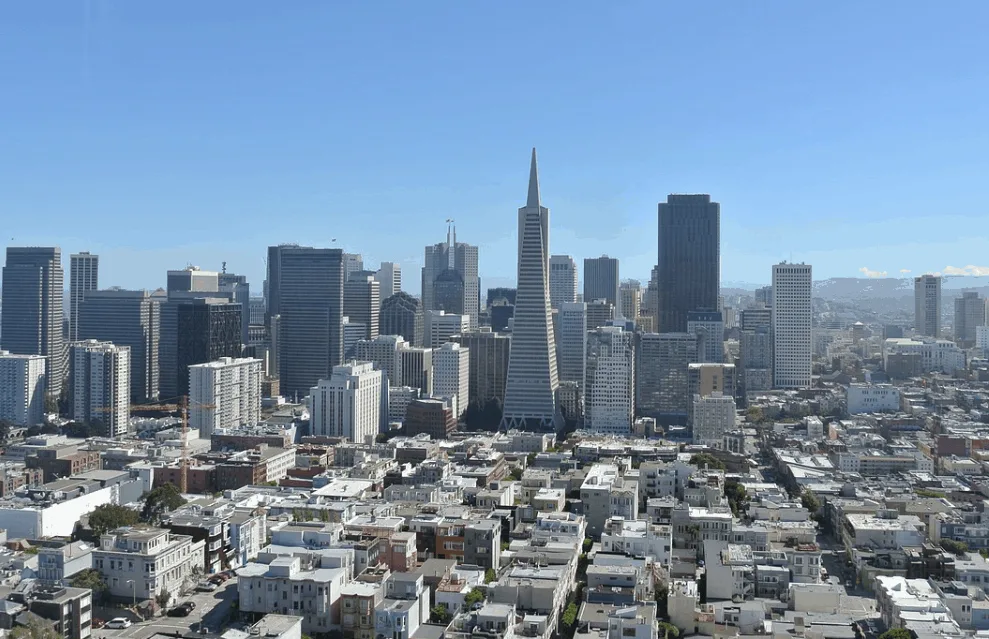
16. The base of the tower was built on a foundation of 9 feet (2.7 meters) thick. It took 3 days of pouring concrete to fill all the foundation pits.
17. The base of the Transamerica Pyramid consists of 16,000 cubic yards (12,000 cubic meters) of concrete and over 300 miles (480 kilometers) of steel rebar.
18. The original plan was to construct a building with a height of 1,150 feet (350 meters). This would have been the second-tallest building in history at the time and would have held this record for at least a year. The proposal was rejected because it would have interfered with views from the San Francisco Bay from Cob Hill.

19. The building has a total of 3,678 windows. One of the coolest Transamerica Pyramid facts is that they can be turned nearly 360 degrees. This means nobody needs to risk their lives to wash the windows as this can be done from the inside of the building.
20. What is inside the spire of the Transamerica Pyramid? Nothing, it’s hollow and only features a 100-foot steel stairway at a 60-degree angle and two additional ladders.
21. The top floor, which is located at the 48th level of the building, features what is most probably one of the most awesome conference rooms in the world. Why? Because it offers amazing 360 views of the city and the San Francisco Bay!
